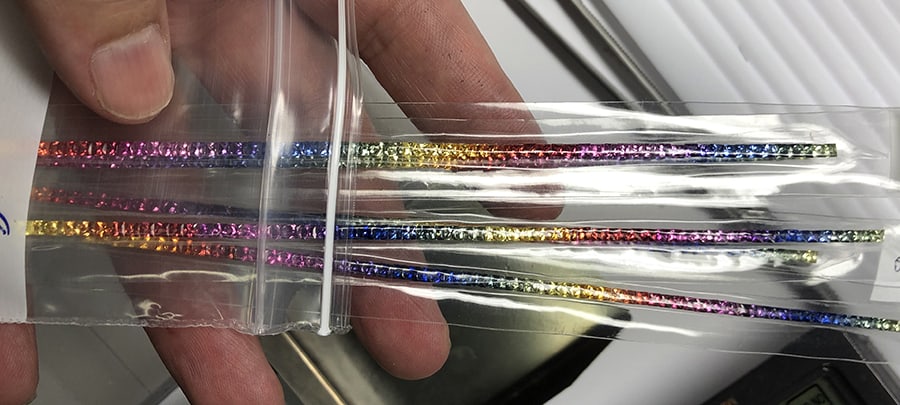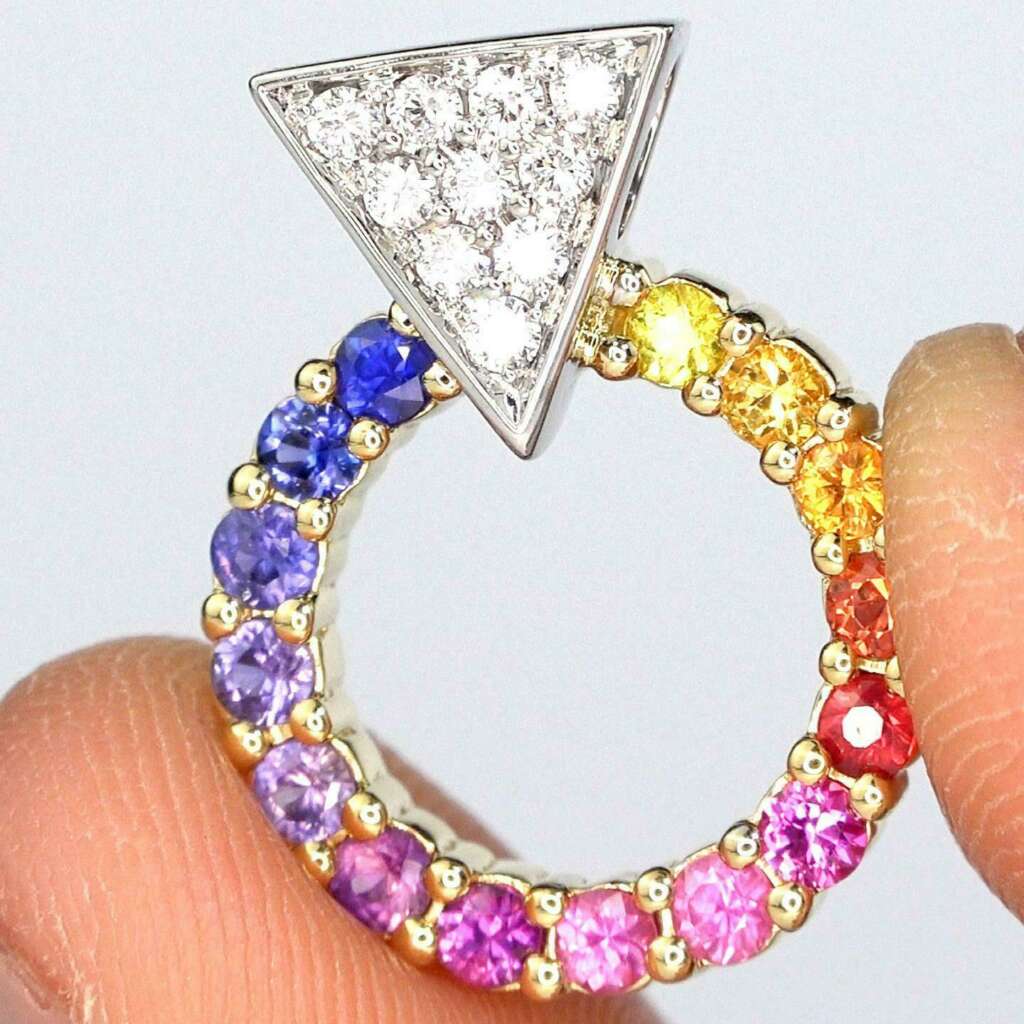A Brief History of Rainbow Sapphires
In the early 2000’s Rainbow Sapphires burst on to the jewelry scene in a riot of color¹. The ubiquitous rainbow sapphire bracelet was born, and a 1000 different variations of color in rings, pendants and earrings showered consumers with intense chromatic zest.
The style was pioneered by Jeffrey Krasner & Samantha Kogen of the Rainbow Sapphire Collection ( Rainbowsapphire.com ) and then further popularised by Michael Couch & Associates. Both companies sourced sapphires in Thailand, and in particular the city of Chanthaburi’s huge ruby and sapphire industry to make the sets.
A lull in the rainbow market occurred as from about 2012, with www.rainbowsapphire.com retiring from the industry in 2015, which was subsequently acquired by our parent company FlamesAsia. Colorful sapphire sets sold slowly, and poor products with second and third rate clarities, low quality cutting, inferior fire, and lacking in intense color prevailed, and the style jumped over to cheap silver jewelry.
However, in the last 2 years the style is back in fine jewelry, and jewelers all over America and starting to sell these lines again. However, the style has evolved a little and here we shall look at the definitions of Rainbow, Prismatic and Kaleidoscope sapphire, and then set down The Connoisseur’s Guide To Rainbow Sapphires, and then with some understanding you will be able to interpret quality and value and communicate this to clients to help guide them.
Rainbow Sapphires – The Full Spectrum
Rainbow Sapphires are defined as a set of sapphires that comprise of the full spectrum of color, without missing any of the following hues, and are in the order of the color-spectrum: red, orange, yellow, green, blue and violet.

Prismatic Sapphires – A Partial Spectrum
Prismatic Sapphires are defined as a set of sapphires that only partially comprise of the spectrum, but are missing one of more color hues, but still run in spectrum order. An example would be a jeweler who chooses not to use the green part of the spectrum and creates a prismatic run of sapphire in blue, violet, red, orange and yellow.

Kaleidoscope Sapphire – The Rule Breakers
Quality & Value in Rainbow, Prismatic & Kaleidoscope Sapphires
In the fast-paced social-media jewelry chat and interest groups, we often see comments regarding rainbow sapphires saying “we can get it cheaper!”. The jewelry world is an industry that understands that quality is price. Saying you can get “it” cheaper, is like saying you can get a diamond cheaper without any reference to size, clarity, color or make.
These colorful sapphire arrays see massive variations in between different vendor’s sets, and subsequently a truly bewildering range of prices can be found.
Sizes, Angles, Fire & Cut
1. Calibration across both length and width. Top quality stones are generally exactly calibrated to +/-0.05mm. While this may seem overly strict, dropping the tolerance to only +/-0.1mm is effectively a whopping 400% more in size variation – something the human eye picks up and sees as less pleasing. In the +/-0.05mm tolerance range, a sense of perfection from the increased balance and harmony prevails.
2. depth matching, angle matching and brilliance, intensity of color.Depth calibration giving evenness of fire and color intensity throughout individual sapphires and the array.
3. Demand for even number semi-mounts 2 and 2.5 and 3 is often high, and subsequently these are priced higher than 2.3, 2.7 etc
4. Price per carat can triple as you move up the sizes meaning a 7 inch bracelet at 1.8mm will be six times cheaper than a 7inch at 3.5mm4
Color & Harmony
5. In full 7 inch bracelet sets there should be no breaks or blocks in color.
Intensity Matching
Switching intense hues for pastel hues s another trick to lower costs. Dropping intensity in blues and red is the most common. Quality rainbow sapphires are marked by vibrant intense blue and intense pink, reds and purples.
Smaller run sets for half-eternity and small pendants are often cheaper per carat as the color moves in blocks, or further down the spectrum, allowing the manufacturers far more tolerance and less stringent on color matching the next piece.
Double use of green around the clasp on bracelets under the wrist.
Dropping the clarity on the more “closed colors” of purple and blue.
Using closed blues and purples.
The elongation of cheaper colors of the range such as the yellows and greens. Every part of the range should be proportional as it moves through the color spectrum.
Showing all 3 results
Setting For The Ages – Durability
Like any other type of fine jewelry, thoughts of durability need to be considered. In terms of both structural integrity and also cleanliness that leads to reduced brilliance and beauty.
The 7 inch rainbows are almost exclusively worn upon the wrist. Unless you are living in the tropics this means the bracelet will constantly come into contact with fibres on a nearly daily basis, and with vigorous contact being made upon the putting-on and taking-off of long sleeved apparel.
Some setting designs are inherently stronger than others. Prong setting small round brilliant cuts and wearing them on the wrist will lead to increased stress upon the prongs, that may eventually lead to a cuff- fiber snagging and bending a prong resulting in a loss gem from the array. The smaller the gems, the smaller the prongs, and the weaker they are. While this can be partially countered by increasing tensile strength of the gold by moving from 18 to 14k, we would also ask you to consider the benefits of a channel set bracelet.
Channels sets are inherently stronger. The channel arrangement utilises longer setting that are much much stronger in terms of stone protection. Underneath, they are generally joined in a rod and hole arrangement and the joins are far stronger too. Extrapolated over the years this means that a rainbow bracelet is going to last the years.
- Prior to 2002 rainbow sapphires had been made, but were made in Pastel Ranges that did not appeal to the eye in the same way. The problem was obtaining the intense oranges and yellows prior to 2002, and it would take take the accidental discovery of placing chrysoberyl into the heating crucibles for the aspiring rainbow sapphire manufactures to solve this problem of intensity matching in this part of the color range.